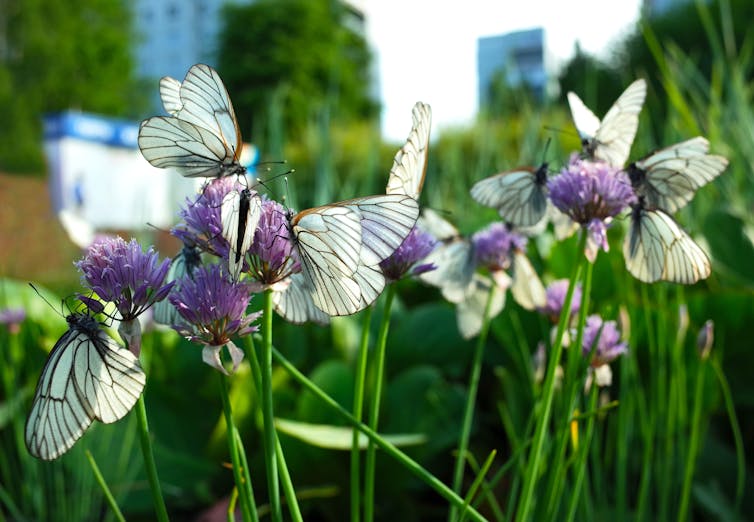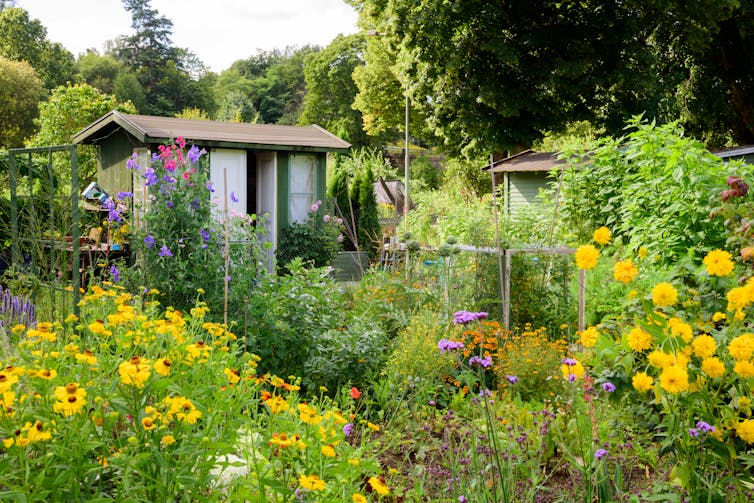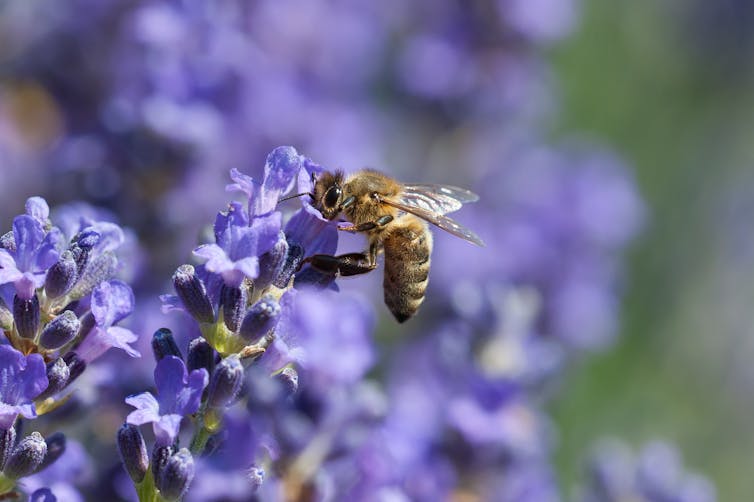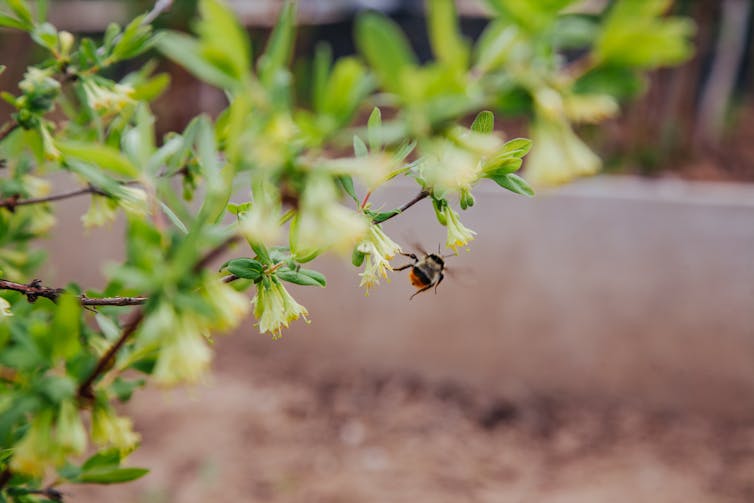
Sidorova Mariya | Shutterstock
Pollinators are struggling to survive in the countryside, where flower-rich meadows, hedges and fields have been replaced by green monocultures, the result of modern industrialised farming. Yet an unlikely refuge could come in the form of city gardens.
Research has shown how the havens that urban gardeners create provide plentiful nectar, the energy-rich sugar solution that pollinators harvest from flowers to keep themselves flying.
In a city, flying insects like bees, butterflies and hoverflies, can flit from one garden to the next and by doing so ensure they find food whenever they need it.
These urban gardens produce some 85% of the nectar found in a city. Countryside nectar supplies, by contrast, have declined by one-third in Britain since the 1930s.
Our new research has found that this urban food supply for pollinators is also more diverse and continuous throughout the year than in farmland. Everyone with a garden, allotment or even a window box can create their own haven for pollinators. Here are tips on what to plant for each season.

KOTOIMAGES | Shutterstock
What to plant in spring
The first queen bumblebees emerge from winter hibernation in February and March. They need food straight away.
At this time of year nectar-rich plants are vital energy sources for warming up cold flight muscles, with pollen providing the necessary protein for egg laying and larval growth. In early spring much of the countryside is still bleak and inhospitable.
Gardeners can help by planting borders of hellebore, Pulmonaria and grape hyacinth. Trees and shrubs such as willow, cherry and flowering currant are also fantastic for packing a lot of food into a small space.
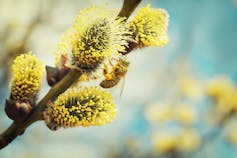
Ira Kalinicheva | Shutterstock
What to plant in summer
In late spring and early summer, pollinators have more food available – but there is also more competition for it. So it is crucial to ensure you have a diverse array of different flowering plants. This will guarantee there is attractive and accessible food to suit a wide range of insects and provide them with nutritionally balanced diets.
A great assortment of plants, including honeysuckle, Campanula and lavender, can provide floral resources in summer. Mowing the lawn a little less often will help too, giving the chance for important so-called weeds, such as clover and dandelion, to bloom.
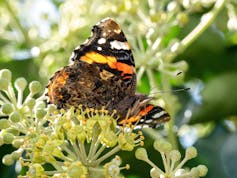
Seepix | Shutterstock
What to plant in autumn
By late summer and autumn there are fewer species still flowering in gardens. A handful dominate the nectar supplies, particularly Fuchsia, Salvia and Crocosmia.
For many pollinators, however, these flowers are entirely useless. Their nectar is hidden away down a tube, only accessible to insects with long tongues, such as the garden bumblebee.
This means solitary bees and hoverflies may need to find other sources of food. The gardener can help by prioritising open and accessible flowers. Opt for species such as ivy, Sedum, Echinacea and oregano.
What to plant in winter
Few pollinators are still active in winter. Most species die off leaving the next generation behind as eggs, larvae or pupae.
But bumblebees and honeybees remain in flight, taking advantage of the warmer climate and winter flowers that cities can provide. By vibrating their wings, bumblebees can warm up to forage in temperatures barely exceeding freezing point, but they need a lot of energy-rich nectar to do so. If you want to attract bees into your garden during the winter some of the best options are Mahonia, sweet box, winter honeysuckle and the strawberry tree.
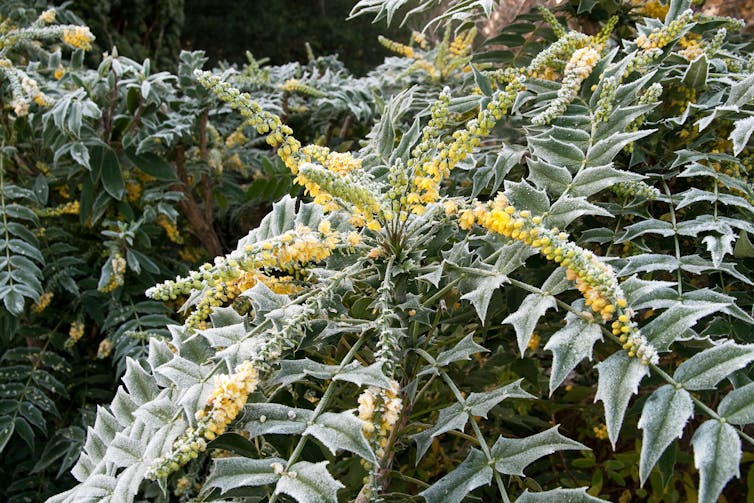
Sally Wallis | Shutterstock
Urban gardens are small and numerous, with hundreds or even thousands packed into a single square kilometre of a residential neighbourhood. Each gardener is different, with individual preferences of what to plant, how regularly to mow the lawn and even how to decide what constitutes a weed.
This results in an enormous variation from garden to garden in the quantity of nectar, the timing of its production and the types of flowers producing it. But there is always room for improvement. Some gardens provide pollinators with hundreds of times less nectar than others.
So keep yours well stocked with nectar and free from toxic pesticides. You’ll be amazed by the impact you can have.
This blog is written by Caboteers Nicholas Tew, PhD Candidate in Community Ecology, University of Bristol; Jane Memmott, Professor of Ecology, University of Bristol, and Katherine Baldock, Senior Lecturer in Ecology, Northumbria University, Newcastle
This article is republished from The Conversation under a Creative Commons license. Read the original article.

